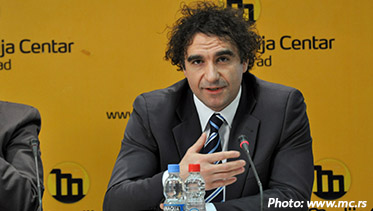
The Ministry of Mining and Energy issued a rulebook for minimal criteria of energy efficiency in public procurement of goods. It regulates office IT equipment, refrigerators, air conditioners, and inner and outside lighting for public facilities. The regulations are based on the Law on Efficient Use of Energy, and public institutions and government-controlled companies are obliged to implement it.
The public sector should make an example in efficient energy use, says Miloš Banjac, assistant minister of mining and energy, responsible for renewable sources and energy efficiency. He told Balkan Green Energy News the law and rulebook set a legal basis for the harmonization with the European Union’s directives 2006/32/EC and 2012/27/EU.
“The document was created as the result of the work of the Ministry of Mining and Energy, experts from the Regional Energy Efficiency Program (REEP) of the European Bank for Reconstruction and Development, and the intersectoral working group. The expert team made a cost-benefit analysis for a large number of products in the market of the Republic of Serbia which have obligatory criteria for energy efficiency in public procurement introduced in EU practice, also taking into account the kinds of products which are procured by the public sector,” Banjac added. The effectiveness is defined as the ratio of benefits and costs greater than 1.5, with an internal rate of return on capital of 15% or above, he stressed.
Office and IT equipment need to satisfy the newest standards from the international Energy Star programme on the day of the start of the procurement process, and they should come with a handbook about energy savings. Refrigerators, including ones with freezers for food, need to be in class A+++, with energy efficiency index (EEI) lower than 22. One- and two-channel air conditioners fulfil minimal criteria if their efficiency class is A or higher, with nominal cooling coefficient (EER) of 2.6 or above and nominal heating coefficient (COP) of 3.1 or more. Other such devices require a seasonal energy efficiency ratio (SEER) of 5.1 or above and a seasonal coefficient of performance (SCOP) of 3.4 or higher.
Non-directional lamps for inner lighting have to have EEI of 0.24 or lower at class A or higher, and life length of at least 8,000 hours, while the rules for directional ones are the same except that their index needs to be 0.4 or lower. Inner lighting with energy efficiency class A+ or higher has to have life length of 15,000 hours, with EEI of 0.17 or lower for non-directional and 0.18 or less for directional lamps.
Lamps for outside lighting fulfil minimum criteria if they are in class A+ or higher, with average life length of at least 16,000 hours. Non-directional lamps need EEI of 0.17 or lower, and directional ones must have an index of 0.18 or less.




















